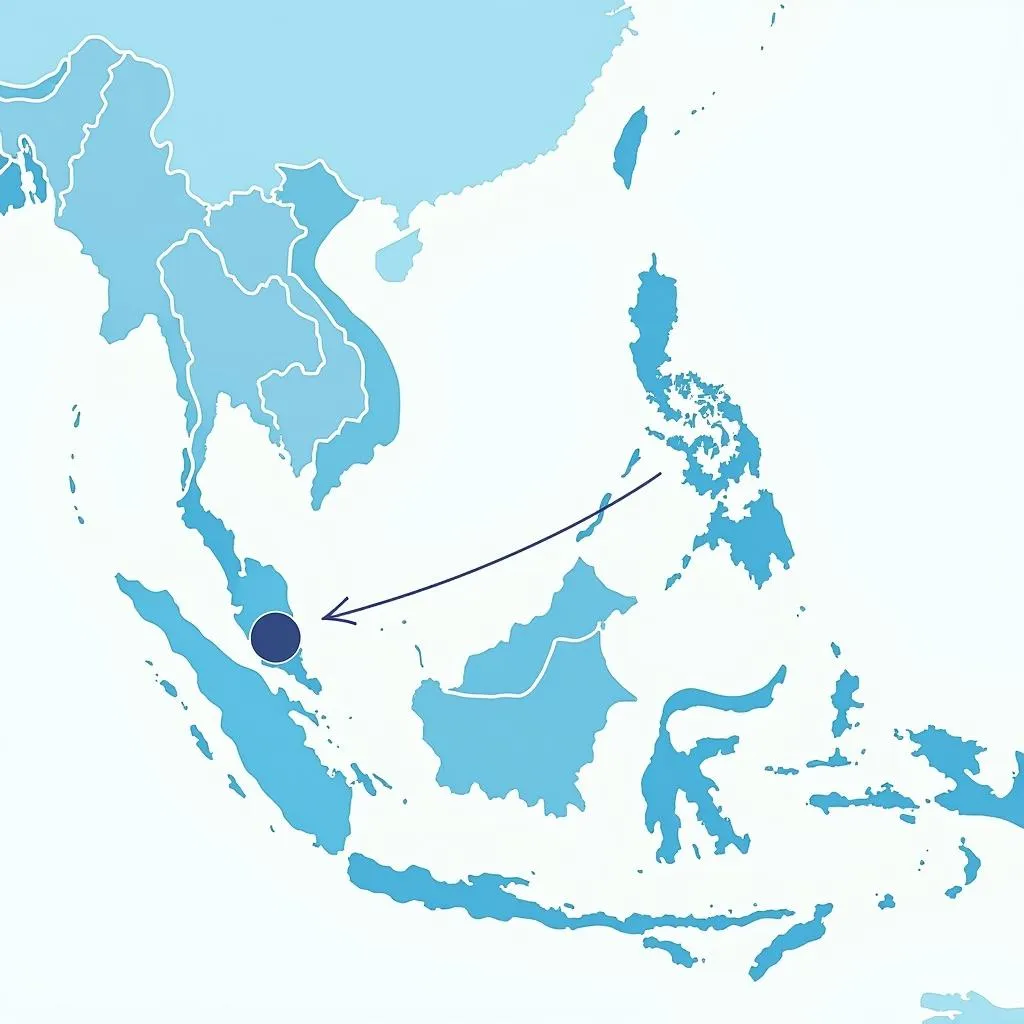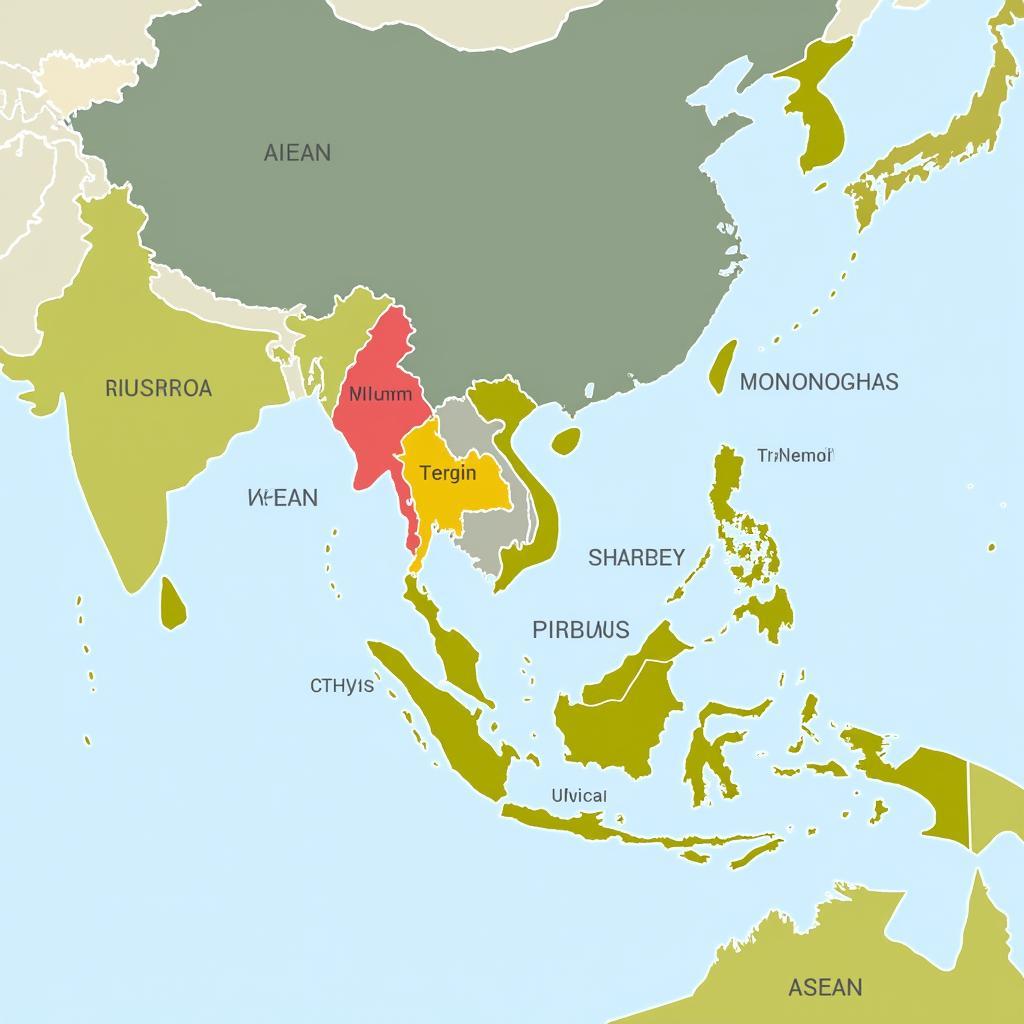The 2018 ASEAN Guidelines on Electronic Commerce, or “2018 ASEAN Guidelines” as they are commonly known, represent a pivotal moment in the region’s journey towards a thriving digital economy. These guidelines, endorsed by ASEAN leaders, set a clear path for harmonizing e-commerce regulations and fostering cross-border trade within the bloc.
This move towards a more integrated digital marketplace is crucial, especially considering the rapid growth of e-commerce in Southeast Asia. The region boasts a young, tech-savvy population and a rapidly expanding internet user base, making it a hotbed for digital innovation and entrepreneurial spirit.
Fostering Trust and Confidence in the Digital Space
 Building trust in ASEAN e-commerce
Building trust in ASEAN e-commerce
One of the key objectives of the 2018 ASEAN Guidelines is to build trust and confidence in the digital ecosystem. This is being achieved through provisions aimed at:
- Consumer protection: Addressing concerns regarding online fraud, data privacy, and dispute resolution.
- Cybersecurity: Establishing frameworks to combat cyber threats and ensure the security of online transactions.
- Digital identity: Promoting the development and adoption of secure and reliable digital identity systems.
By tackling these crucial aspects, the guidelines aim to create a more secure and transparent online environment, encouraging greater participation in the digital economy, particularly from businesses and consumers who may have previously been hesitant.
Breaking Down Barriers, Opening Up Opportunities
 Facilitating cross-border e-commerce in ASEAN
Facilitating cross-border e-commerce in ASEAN
Beyond fostering trust, the 2018 ASEAN Guidelines are also instrumental in removing barriers to cross-border e-commerce. This is critical in maximizing the potential of the digital economy and unlocking new opportunities for businesses and consumers alike. Key areas addressed include:
- Harmonization of regulations: Streamlining customs procedures and aligning rules on digital signatures and electronic transactions to simplify cross-border trade.
- Logistics and infrastructure development: Encouraging investments in digital infrastructure and efficient logistics networks to facilitate the seamless flow of goods and services across borders.
- Digital payments and fintech: Promoting the interoperability of payment systems and facilitating cross-border payments to make online transactions smoother and more accessible.
By breaking down these barriers, the guidelines pave the way for a more interconnected ASEAN, allowing businesses, especially SMEs, to tap into regional markets and expand their reach.
Empowering SMEs in the Digital Age
 Supporting ASEAN SMEs in the digital economy
Supporting ASEAN SMEs in the digital economy
The 2018 ASEAN Guidelines recognize the significant role of Small and Medium Enterprises (SMEs) in driving economic growth and innovation. The guidelines emphasize empowering SMEs to participate actively in the digital economy through measures such as:
- Capacity building and skills development: Providing training programs to equip SMEs with the necessary digital skills and knowledge to thrive in the online marketplace.
- Access to finance: Supporting initiatives that improve SMEs’ access to funding and financial resources, crucial for adopting new technologies and scaling their operations.
- E-commerce platforms and marketplaces: Encouraging the development of platforms that connect ASEAN SMEs to regional and global markets, facilitating their participation in cross-border trade.
By empowering SMEs, the guidelines aim to create a more inclusive digital economy where businesses of all sizes can benefit from the opportunities presented by e-commerce and digital trade.
The Road Ahead: Collaboration and Innovation
The 2018 ASEAN Guidelines are not an end goal but rather a dynamic framework for continuous improvement. The journey towards a fully integrated and thriving ASEAN digital economy requires ongoing collaboration and innovation.
Moving forward, ASEAN member states need to work together to implement the guidelines effectively and adapt them to the ever-evolving digital landscape. Continued dialogue and partnerships between governments, the private sector, and civil society will be crucial in addressing emerging challenges and seizing new opportunities in areas like data governance, cybersecurity, and emerging technologies.
The 2018 ASEAN Guidelines serve as a cornerstone for the region’s digital future, one characterized by inclusivity, innovation, and shared prosperity. By embracing collaboration and fostering a conducive environment for digital growth, ASEAN is well-positioned to become a global leader in the digital economy.
FAQ
What is the main objective of the 2018 ASEAN Guidelines?
The main objective is to create a harmonized and thriving e-commerce environment within ASEAN, promoting cross-border trade and digital economy growth.
How do the guidelines address consumer concerns in the digital space?
They address consumer protection by focusing on issues like online fraud prevention, data privacy, and establishing effective dispute resolution mechanisms.
Why is the empowerment of SMEs a key focus in the guidelines?
SMEs play a crucial role in ASEAN’s economic landscape, and the guidelines aim to equip them with the necessary skills and resources to leverage e-commerce for growth.
What are the future challenges and opportunities for ASEAN in the digital realm?
Key challenges and opportunities lie in data governance, cybersecurity, and harnessing the potential of emerging technologies while ensuring inclusive growth.
Need More Information?
Contact us at:
Phone Number: 0369020373
Email: aseanmediadirectory@gmail.com
Address: Thôn Ngọc Liễn, Hiệp Hòa, Bắc Giang, Việt Nam
Our customer service team is available 24/7 to assist you.

